Camping
Wilderness RegulationsPlease review the regulations before planning an overnight trip into the Bob Marshall Wilderness. For more information about entering the Bob Marshall Wilderness go here.
Bears & Your FoodThe Bob Marshall Wilderness is home to both grizzly and black bears. Special Orders designed to minimize grizzly bear/human conflicts are in place across the region. Storage of food, garbage and other attractants is restricted during occupancy. For more information minimizing bear conflicts in the Bob Marshall Wilderness go here.
Fly Fishing the Bob Marshall Wilderness
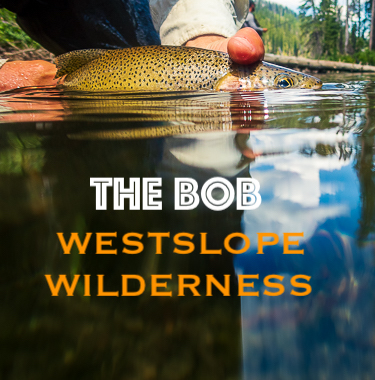
The United States Congress designated the Bob Marshall Wilderness in 1964. The area was named after wilderness preservation pioneer and Wilderness Society cofounder Bob Marshall. The entire 1,009,352 acres wilderness area resides in Montana. The Bob has it's commonly called is one of the most completely preserved mountain ecosystems in the world. The Bob features: rugged peaks, alpine lakes, cascading waterfalls, grassy meadows, a thick coniferous forest and big river valleys.
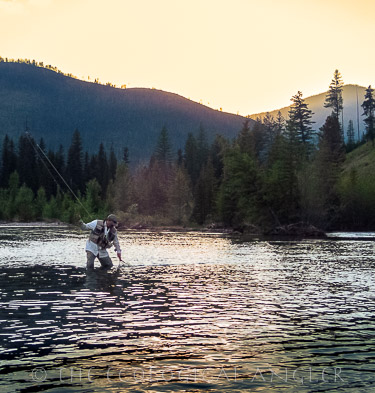
And of particular interest to anglers - a large and healthy population of native Westslope Cutthroat trout. It's also worth mentioning - the wilderness is prime Grizzly bear habitat. The U.S. Forest Service claims the population density of Grizzlies is higher in "The Bob" than anywhere in the U.S. outside of the Greater Yellowstone Ecosystem or Alaska.
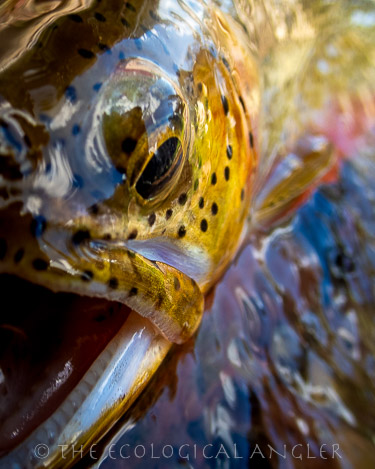
The only bear sighting happened the morning of our departure. One of the coolers holding our food for breakfast got broken into at 4AM... he got into it pretty good before anyone heard it. Noise and some bear-spray chased him off. But it was a 1 or 2 year old black bear and he kept circling our camp. A little more bear spray and some well placed rocks were needed to push him across the river. Fortunate to have it happen on the last day of camp!
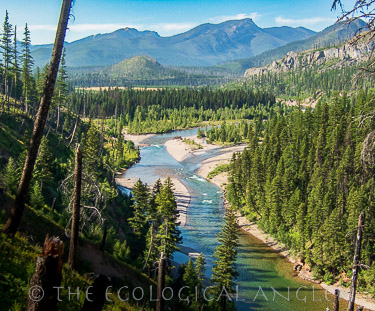
Our base camp for the week was a short walk from the the South Fork of the Flathead River. The South Fork begins in the Bob Marshall Wilderness at the confluence of Danaher Creek and Youngs Creek. Its flow increasing with the contributions of the White River , Big and Little Salmon creeks, Black Bear Creek, and other tributaries. Overall, the South Fork flows more than 60 miles through designated wilderness and National Forest lands before emptying into Hungry Horse Reservoir. The main river corridor was popular with boaters and backpackers stopping to camp. That said, our group only encountered a handful of anglers on one of the seven days.
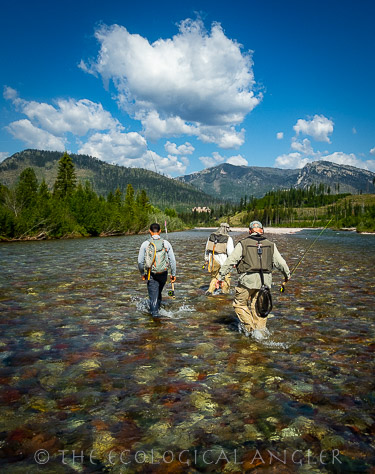
The fishing was good in the smaller creeks as well, but I would say the South Fork Flathead held the larger Westslope cutthroat. The fishing turned out to be a bit more technical than I imagined for remote, cutthroat water. A couple of factors probably led to this. One, flows in feeder streams and the South Fork were typical for mid summer - low and extremely clear. Two, the larger cutthroats over 14 inches held in deeper pools were the flows were slower. Smaller flies (sz. 16 to 18) combined with drag-fee drifts resulted in a way better strike ratio. You don't need to pack a large collection of flies to be successful in the Bob Marshall Wilderness. Fly fishing go tos include the popular attractor dry flies like Black Humpies, Royal Wulffs, Renegades as well as Elk-hair Caddis, Parachute Adams, Stimulators, hoppers, ants and foam beetles.
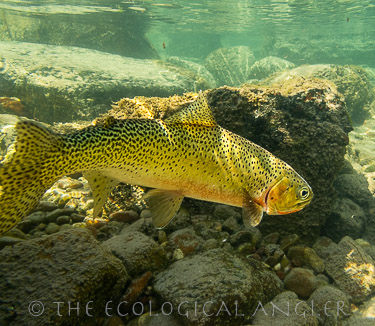
We lucked out on the weather and had only one serious thunderstorm the night before we journeyed into The Bob. The last week of July provided ideal flows and temps on the South Fork of the Flathead for both the fish and the wading. One of the nicest and most extensive freestone rivers I've fished. Pack studded boots when you go! As a freestone river, the South Fork of the Flathead is vulnerable to the amount and timing of runoff. It's typically unfishable until mid to late June. In years of heavy precipitation or runoff, it may not come into shape until after early July. A reasonable time frame to fish the South Fork inside the Bob Marshall Wilderness is between July 15 and October 15.
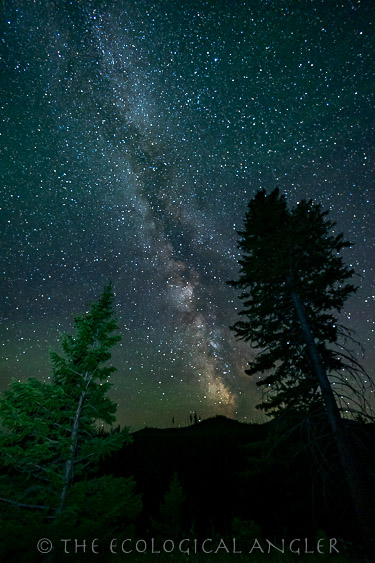
South Fork Flathhead River Access
The lower South Fork Flathead can be accessed by foot or horseback via the Meadow Creek Trailhead. This trailhead served as the entry and exit for my group trip into the Bob. The trail (TR 80) parallels the east bank of the river to Black Bear Creek. The Meadow Creek Trail traces the rim of the Meadow Creek Gorge for the first three miles or so. Accessing the Flathead River from the rim of the gorge is black-diamond for sure and dangerous at best. I would recommend trekking further along the trail and begin fishing outside the gorge.
